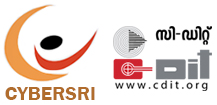Post Production Technologies

PRODUCTION TECHNOLOGIES IN AUDIO VISUAL MEDIA
Post Production Technologies in Audio Visual Media
STRUCTURE OF TRAINING
- Qulalification : Graduates in any discipline or Course Completed
- Duration of the training program : Six months
- Total student’s capacity per batch : 10 nos.
- Total number of students trained in ITBFM Programme is 20 numbers in one year .
| Phase | Program |
|---|---|
| Phase I | FILM AND VIDEO EDITING |
| Phase II | AUDIO ENGINEERING |
| Phase III | VISUAL EFFECT TRAINING |
| Phase IV | Main project |
PRODUCTION TECHNOLOGIES IN AUDIO VISUAL MEDIA- TRAINING MODULES
FILM AND VIDEO EDITING
Module 1: Final Cut Pro Editing This module contains digitizing and organizing source footage, editing sync and non-sync material, trimming sequences, editing audio, adding effects, creating titles, and outputting work to tape. Class time is divided between demonstration and hands-on practice time, with ample time for experimentation with engaging sample media. Students will edit several different types of footages. Students practice logging, digitizing and outputting to tape. Students will work extensively with FCP’s digitizing and output tools.
Module 2: Post Studio Session In this class students receive several projects to work on. The power up sequence, drives, creating a new project and user settings, changing settings, digitizing, deck setup and trimming edits and output (Print to media, Edit to tape)
Module 3 Editing Aesthetics This course’s content includes telling stories through images, thorough discussion of “how we see”, the art and craft of editing with a practical analysis of emotional responses. The class is presented in a seminar fashion showing clips from over 100 years of cinema
Module 4 Introduction to graphic to Adobe Photoshop Photoshop is used to create complex graphics and enhance photographic images in the production of special effects in 2D, 3D, and moving images. This class introduces all phases of Photoshop, starting with the file browser, selection tools, and basic use of layers. Students learn how to create alpha channels, gradients text and text effects, how to use the pen tools, color correction.
Module 5 Advanced Editing Workshop Drawing upon knowledge of visual effects techniques, as well as previous training in story structure, trimming, and assembly, this section uses real-life footage to give students a chance to exercise their creative skills and get feedback. As a more advanced course, the class covers the differences in creating montages and straight-ahead narrative, while working to both perfect a montage (credit sequence, music video, and trailer, commercial) and to edit down a narrative scene to time.
Module 6 Intro to Adobe After Effects & Apple Motion
Module 7 Editing Audio in FCP This section focuses on FCP’s audio editing toolkit and audio editing practices and techniques. This includes demonstration and exercises where students gain practical hands on experience. Finally, students will learn how to export their project media to Soundtrack Pro for further audio editing.
Module 8 Exporting-Mastering This section covers how to convert the project to different formats like MPEG, AVI, MOV, DV stream, HD etc. Mastering DVD & CD Using DVD Studio Pro, i DVD & Roxio Toast, creating (menu, chapter, Buttons) exporting & writing DVD’s.
AUDIO ENGINEERING
Module 1: Introduction Recording – Historical account – Evolution of sound recording -Methodology of the past and present – Vinyl – Magnetic tape – Digital – CD –DVD – Quality of recording – Recording Principles – Storage –. Analogue – Digital – Optical – Multi channel computer net work based distributed storage like San.
Module 2: Microphones Microphone – Various types – The mechanism of converting acoustic energy into mechanical energy.- It’s transient response -frequency response–Reliability and cost – Directional property – Bass -Stereo mikes – Mike selections.
Module 3: Studio setup Studio – Studio hard ware –Acoustics – Reverberations – Different types of studios – Talk –Drama – Music – Discussion – Connectivity –PSTN-ISDN – Satellite – Studio linking Satellite receiver – on line Radio -internet Radio -World space Radio – OB Recoding – Requirement according to different programme format.
Module 4 Equipments and techniques – Evolution of sound recorders –Analogue – Digital – Console tape recorders – Digital work station – Server – Software used for recoding in the digital era – Basics of hard ware – Dubbing Equipments-Maintenance and up keeping instruments
Module 5 Post production equipments, an evolution- Editing- Cutting-dubbing -Digital assembly – or by computer – Personal computer with sound cards-Aesthetics – scheduling – transmission – report generation
VISUAL EFFECTS
Module 1 Visual Effects- Description- Types- Particles – Analysis- Size- Sand Effects – Smoke Effects- Fire Effects – Cloud Effects – Snow Effects.
Module 2 Fluid Effects-Coloring- designing Clouds Background – Designing Fog Effects – Explosion Effects– Fire Effects with flames – Space Effects and designs- Designing Thick Smoke
Module 3 Designing Paint Effects – Coloring paints- Designing Trees and green effects – Designing Weather and seasons –Effects on seasons- Designing Glass image – Designing Different glass reflection Designing Glow Effects – Liquid Effects and reflection design
Module 4 Designing Special Effects – Designing effects of Hair and shape – Designing Fur Effects- Designing Clothes and effects
Module 5 Visual Effects Tool and advanced functions– Converting images from 2D to 3D Pictures. Creating 3D effects. Differentiating 2D effects and 3D effects.
